Papers by Vasant Matsagar

Journal of Engineering, 2014
Multiple tuned mass dampers (MTMDs) distributed along height of a high-rise building are investig... more Multiple tuned mass dampers (MTMDs) distributed along height of a high-rise building are investigated for their effectiveness in vibration response control. A 76-storey benchmark building is modeled as shear type structure with a lateral degree of freedom at each floor, and tuned mass dampers (TMDs) are installed at top/different floors. Suitable locations for installing the TMDs and their tuning frequencies are identified based, respectively, on the mode shapes and frequencies of the uncontrolled and controlled buildings. Multimode control strategy has been adopted, wherein each TMD is placed where the mode shape amplitude of the building is the largest or large in the particular mode being controlled and tuned with the corresponding modal frequency. Newmark's method is used to solve the governing equations of motion for the structure. The performance of the distributed MTMDs (d-MTMDs) is compared with single tuned mass damper (STMD) and all the MTMDs placed at top floor. The variations of top floor acceleration and displacement under wind loads are computed to study the effectiveness of the MTMDs in vibration control of the high-rise building. It is concluded that the d-MTMDs are more effective to control wind induced vibration than the STMD and the MTMDs placed at top floor.

Advances in Structural Engineering, 2014
ABSTRACT The effectiveness of optimal single tuned mass damper (STMD) for wind and earthquake res... more ABSTRACT The effectiveness of optimal single tuned mass damper (STMD) for wind and earthquake response control of high-rise building is investigated. Two buildings one 76-storey benchmark building and one 20-storey benchmark building are modeled as shear type structure with a lateral degree-of-freedom at each floor, and STMD is installed at top or different floors. The structure is controlled by installing STMD at different locations. The modal frequencies and mode shapes of the buildings are determined. Several optimal locations are identified based on the mode shapes of the uncontrolled and controlled benchmark building. The STMD is placed where the mode shape amplitude of the benchmark building is the largest/larger in the particular mode and each time tuned with the corresponding modal frequency, while controlling up to first five modes. The coupled differential equations of motion for the system are derived and solved using Newmark’s step-by-step iteration method. The variations of buildings responses under wind and earthquake forces are computed to study the effectiveness of the STMD. In addition the optimum mass ratios for STMD are obtained. It is observed that the STMD is effective to control the responses of structures subjected to wind and earthquake. Further, STMD tuned to higher modal frequencies will be effective to reduce the responses of the building significantly.
Abstract: An experimental and numerical research project was developed to address the effect of t... more Abstract: An experimental and numerical research project was developed to address the effect of the level of transverse post-tensioning (TPT) and the number of the transverse diaphragms on the performance of side-by-side box-beam bridges using unbonded carbon fiber composite cables (CFCC). The experimental program included the construction, instrumentation, and testing of one half-scaled 30 skew bridge model. The numerical program investigated the sensitivity to longitudinal cracking for a wide range of side-by- ...

Journal of Bridge Engineering, Mar 1, 2014
The discussed paper presents experimental investigation on the flexural behavior of both an AASHT... more The discussed paper presents experimental investigation on the flexural behavior of both an AASHTO-type beam and a bridge model reinforced and prestressed with carbon fiber-reinforced polymers (CFRP) to demonstrate progressive failure mode by arranging the CFRP tendons and rods in different layers along the member’s depth. The authors should be congratulated for producing an excellent paper with interesting information. This is acknowleged by the discusser who would like to make some comments for their consideration, mainly about the scale bridge model, the prestressing tendons, and the test setup. 1. The authors used a scale factor of one-third for the AASHTOtype control beam (12.5 m long and 502 mm deep) and for the 2.5-m width bridge model made up of five such beams. Regarding the cross section of the control beam, and based on the 502 mm depth and the 203 mm width of the bottom flange, it seems that the reduced scale factor was taken in relation to the AASHTO type IV beam, which is often used for span lengths up to 34 m (Gerges and Gergess 2012), or the AASHTO type V beam, which is used for span lengths from 30 to 38 m (Gerges and Gergess 2012), if the related span length (12:5 3 35 37:5m) also is considered. For an unconsidered scale factor of one-half, the cross section of the control beam seems to be related to either the AASHTO type II beam or the AASHTO type III beam if the related span length (12:5 3 25 25m) is considered. In addition, the 95-mm width of the beam web seems a broad width to be related to all the aforementioned AASHTO-type beams, except for type III (953 2 5 190mm is nearly 175 mm). What were the criteria used to choose the scale factor and to design the beam control cross section? It isworth noting that the same scale factor has different effects on length, cross section, and second area moment. 2. Beam spacing in a bridge depends on several factors, including the following: (1) span length, (2) concrete compressive strength, (3) dead and live loads, and (4) allowable concrete service load stresses in accordance with environmental conditions. Why was a beam spacing of 502 mm considered in the bridge model? Regarding the average 28-day concrete compressive strength in the AASHTO beams of 48 MPa, 502-mm beam spacing is approximately 0.6–0.7 [obtained by ð5023 3Þ=2,550 and ð5023 3Þ=2,100] times the maximum beam spacing for a scale factor of one-third (37.5-m span length) and 0.45–0.55 [obtained by ð5023 2Þ=2,200 and ð5023 2Þ=1,800] for a scale factor of one-half (25-m span length), when taking the study of Gerges and Gergess (2012) as a reference. 3. According to Gerges and Gergess (2012), the maximum number of 7-wire steel strands (15.2mm in diameter) is of the order of 22–26 for a 25-m span length with an AASHTO type III beam and 40–48 for a 37.5-m span length with an AASHTO typeV beam, resulting in a range of prestressing reinforcement ratios between 0.85 and 1.04%. The authors used a ratio of only 0.35% as an optimum. On what was this optimum based? It seems that this ratio is smaller to introduce, by pretensioning, a concrete stress level nearly 0.6 times the concrete compressive strength. 4. Apart from the diameter and number of prestressing CFRP tendons being small, they were stressed to 50% of their ultimate tensile strength instead of the commonly used 75% prestress level when prestressing steel strands. This can explain the fewer prestress losses with prestressing CFRP tendons compared to conventional steel prestressed members (Caro et al. 2013). A decompression test was conducted to determine the effective prestressing force level. Whywas this test carried out on the bridge model and not on the control beam? A possible stiffness contribution of the transverse diaphragms was avoided in the control beam. 5. In the case of pretensioned prestressed concrete members, the prestressing force is transferred from the prestressing tendons to concrete by bond. Lower tendon prestress level results in a shorter transfer length, defined in ACI 318-11 [American Concrete Institute (ACI) 2011] as the distance over which a strand should be bonded to concrete to develop the effective stress. Besides, it is noted that the prestressing CFRP tendons used were coupled with their developed anchorage system. Do the authors have any information on this anchorage system and its influence on transfer length? Transfer length can be measured (Marti-Vargas et al. 2006b, 2013a) and/or predicted from different equations based on the compatibility of relative displacements (slips) tendon-to-concrete and on equilibrium of forces (Marti-Vargas et al. 2007a, 2012b). As transfer length provisions differ for distinct codes and researchers (Marti-Vargas et al. 2007b; Marti-Vargas and Hale 2013), and no consensus has been reached as to the main parameters to be considered (Marti-Vargas et al. 2012a; Caro et al. 2012), it would be interesting to detail the transfer length provisions used by the authors to design…
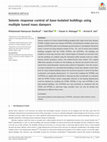
Australian Journal of Structural Engineering, Jul 4, 2019
Seismic response of a base-isolated building equipped with single tuned mass damper (STMD), multi... more Seismic response of a base-isolated building equipped with single tuned mass damper (STMD), multiple tuned mass dampers (MTMDs), and distributed multiple tuned mass dampers (d-MTMDs) under real earthquake ground motions is investigated. Numerical study is carried out using analytical models of five-, 10-, and 15-storey base-isolated buildings equipped with the STMD, MTMDs, and d-MTMDs. The buildings are modeled as shear-type structure with a lateral degree of freedom at each floor level, and the buildings are isolated using the laminated rubber bearing, lead-core rubber bearing, friction pendulum system, and resilient-friction base isolator. The coupled differential equation of motion for the buildings are derived and solved in the incremental form using Newmark's step-by-step method of integration. From the numerical study conducted, it is concluded that installing a tuned mass damper at each floor level of a base-isolated building reduces the structural response in terms of top floor acceleration and bearing displacement. It is found that installing the MTMDs and d-MTMDs are significantly beneficial in reducing top floor acceleration as compared with the STMD. Further, almost comparable reduction in the bearing displacement could be obtained by installing the STMD, MTMDs at top, and d-MTMDs in the base-isolated buildings. The d-MTMDs are more beneficial as compared with the STMD and MTMDs as otherwise huge controller mass can now be divided and distributed on different floor levels.
Journal of Bridge Engineering, Mar 1, 2014
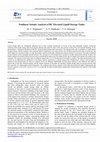
Proceedings of the 12th Structural Engineering Convention, SEC 2022: Themes 1-2
Liquid storage tanks are strategically important due to their essential requirement of service in... more Liquid storage tanks are strategically important due to their essential requirement of service in the post-earthquake situation. Numerical modeling of the liquid storage tank needs special attention and cannot be done in the same manner as that of the conventional buildings. In the present paper, a numerical simulation of the RC elevated liquid storage tank is presented. The staging of the tank is modeled as a multi-degree freedom system, and the container with contained liquid is modeled as a two-mass system. Free vibration analysis of the tank is carried out, and mode shapes are extracted. Further, to study the seismic response of the tank, nonlinear time history analysis is carried out. The tank is subjected to time histories of real earthquake ground motions. The varying level of the liquid in the container is another characteristic feature of tanks. The filled condition of the tank is taken into account by considering the aspect ratio (S), defined as the ratio of height of the ...
Mechanical Systems and Signal Processing
Lecture notes in civil engineering, Sep 28, 2022
CRC Press eBooks, Mar 17, 2022
CRC Press eBooks, Mar 17, 2022
CRC Press eBooks, Mar 17, 2022
CRC Press eBooks, Mar 17, 2022
Passive Vibration Control of Structures, 2022
Passive Vibration Control of Structures, 2022
Passive Vibration Control of Structures, 2022
Passive Vibration Control of Structures, 2022
Passive Vibration Control of Structures, 2022

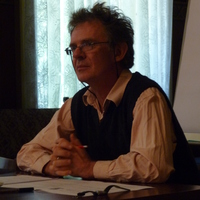

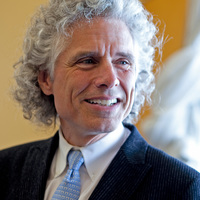
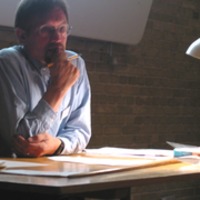


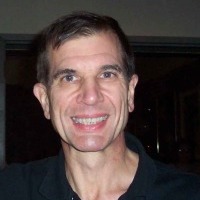



Uploads
Papers by Vasant Matsagar